The 'Docker Images' page is available at Data > Processing Options > Docker Images on the left navigation panel as shown below.
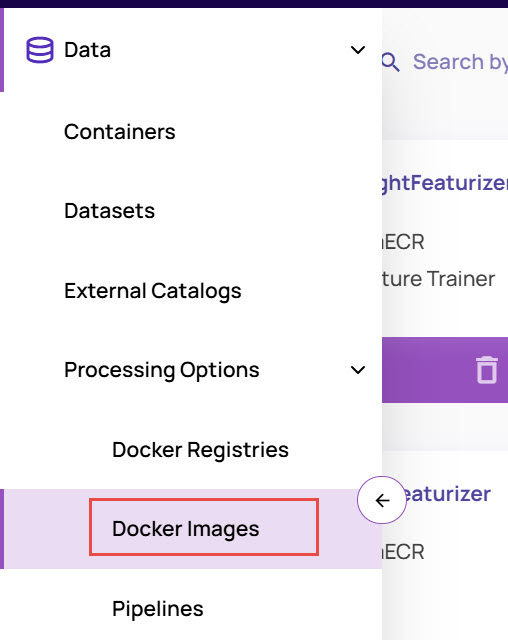
The Vision Copilot default provided docker images are listed with the 'Akridata' badge, as shown.
.jpg) To use a custom docker image in Pipelines, the docker image must be registered as per the instructions on this page.
To use a custom docker image in Pipelines, the docker image must be registered as per the instructions on this page.
To register a docker image, follow the below steps.
The same docker image can be used as part of multiple pipelines and for both the Image and Video types of pipeline, thus allowing reuse.
Click the Register Docker Image button at the top right of the page.
The Register Docker Image form opens.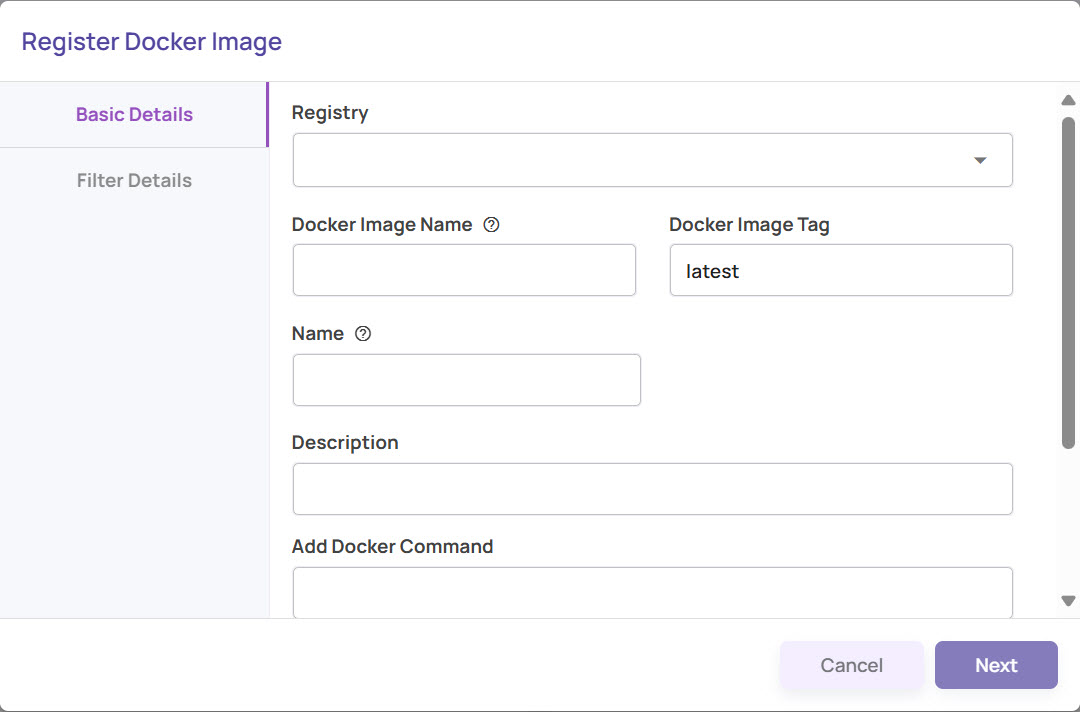
Under 'Basic Details', fill in the details as instructed below.
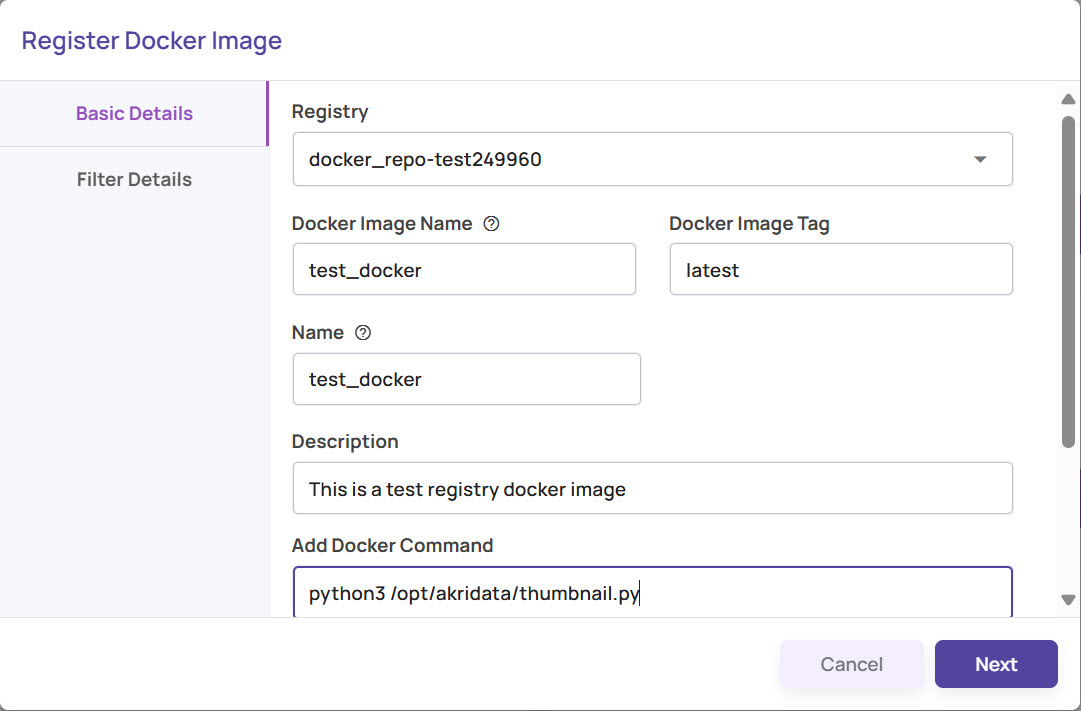
Registry: Select a docker registry available from the drop-down list. The drop-down list contains all the eligible docker repositories that are registered on the Docker Repositories page.
Docker Image Name: The name of the docker image as uploaded to the docker registry using the docker push command. Refer to Publish-docker-image for more details.
Docker Image Tag: The default value of 'latest' will pick the latest available docker image whenever the 'adectl run' is executed. To register a specific fixed version of the docker image, enter the specific tag here.
Name: An identifiable name which will be displayed on the Data Explorer UI.
Add Docker command: Enter the docker command to be executed inside the docker. For the example program described in Develop-docker-image, this field should be filled with 'python3 /opt/akridata/thumbnail.py'.
GPU Usage: Select from available options 'No GPU required', 'GPU mandatorily required', and 'Use GPU if available' depending on the expectations and constraints of the program within the docker image.
Click Next.
Under Filter Details, fill in the details as per the instructions below:
Select Filter type: Select from the drop-down of docker types like 'Featurizer', 'Image Preprocessor', 'Thumbnail generator' and 'Attribute generator'. Depending on the type selected, additional form fields will open up, and these fields are described later in this article.
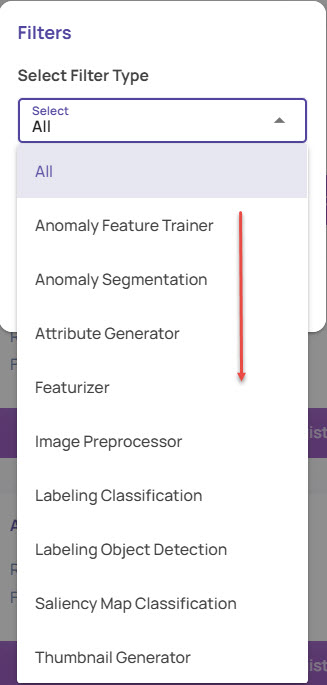
The list of filter types appears in ascending order.
Fields based on docker (filter) type
Thumbnail generator
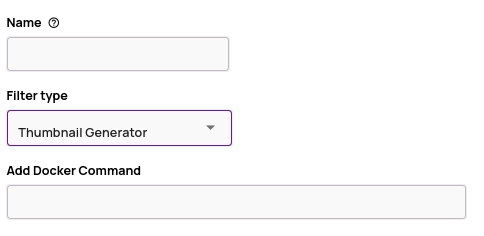
A thumbnail generator does not take any docker type-specific fields.
Image Preprocessor
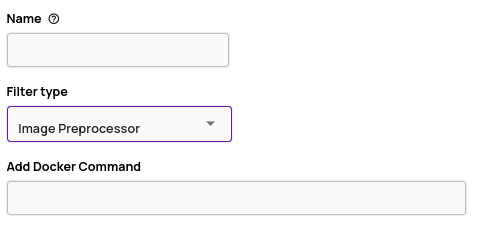
An image preprocessor does not take any docker type-specific fields.
Featurizer
A featurizer docker can produce multiple types of features.
Full features - One feature vector per image.
Patch features - One feature vector per patch on a 2D grid over the image.
Region features - One feature vector per object(region) in the image, with the region identified with bounding box co-ordinates.
When registering the featurizer, the types of features and their dimensions must be provided.
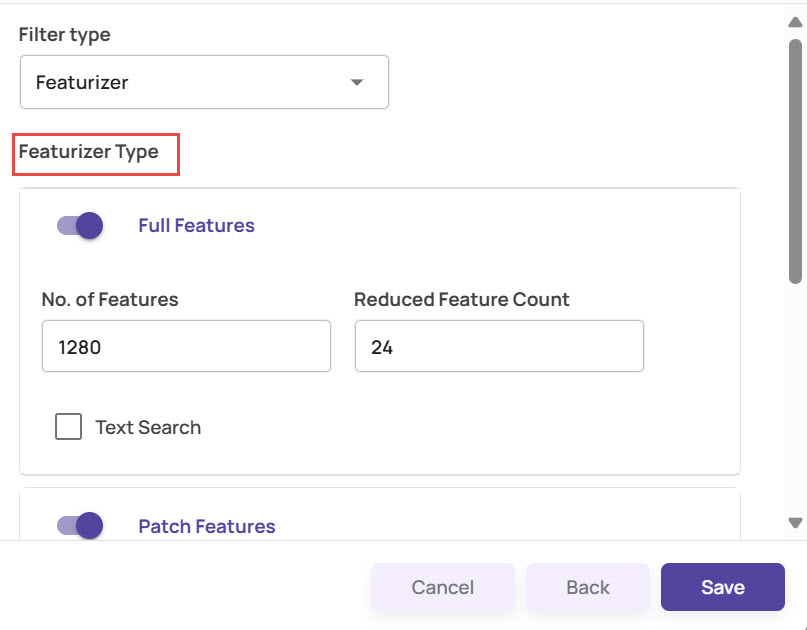
The 'Feature Dimensions' section fields are described below.
Enter the 'No of Features' produced by the featurizer for each image/patch/region.
With a large number of features, operating on the full feature dimensions is resource-heavy. Hence, Vision Copilot implements a dimensionality reduction operation. This 'Reduced Feature Count’ specifies the dimension of the reduced dimensionality feature. As of now, only a value of '24’ is supported and is provided as a parameter for future extensions.
Similarly, enter the details for Patch Features and Region Features if applicable.
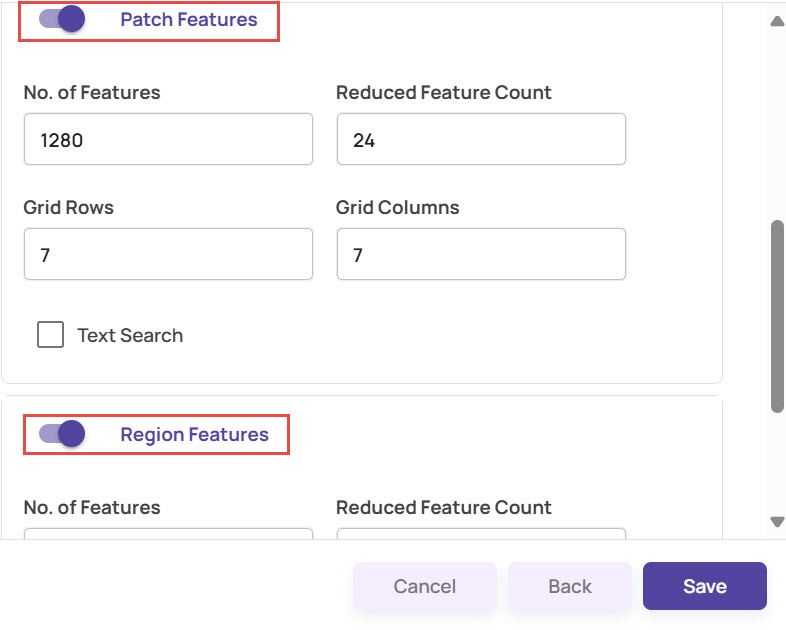
If the featurizer produces text→image aligned features, then enable support for Text Search, and click Save.
Text search on custom featurizer
Please contact Akridata support if you intend to run text search on a custom featurizer.
Attribute generator
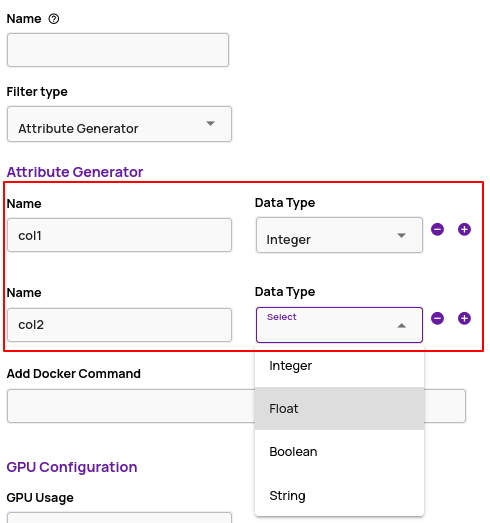
For an attribute generator type of docker, specify the name of the columns generated by the docker and their corresponding data type. If the specification here has N columns, then the output CSV file(refer to Interface specification) is expected to have N+1 columns with first column being the file_path.
Docker Image reuse
The same docker image can be used as part of multiple pipelines and for both the Image and Video types of pipeline, thus allowing reuse.